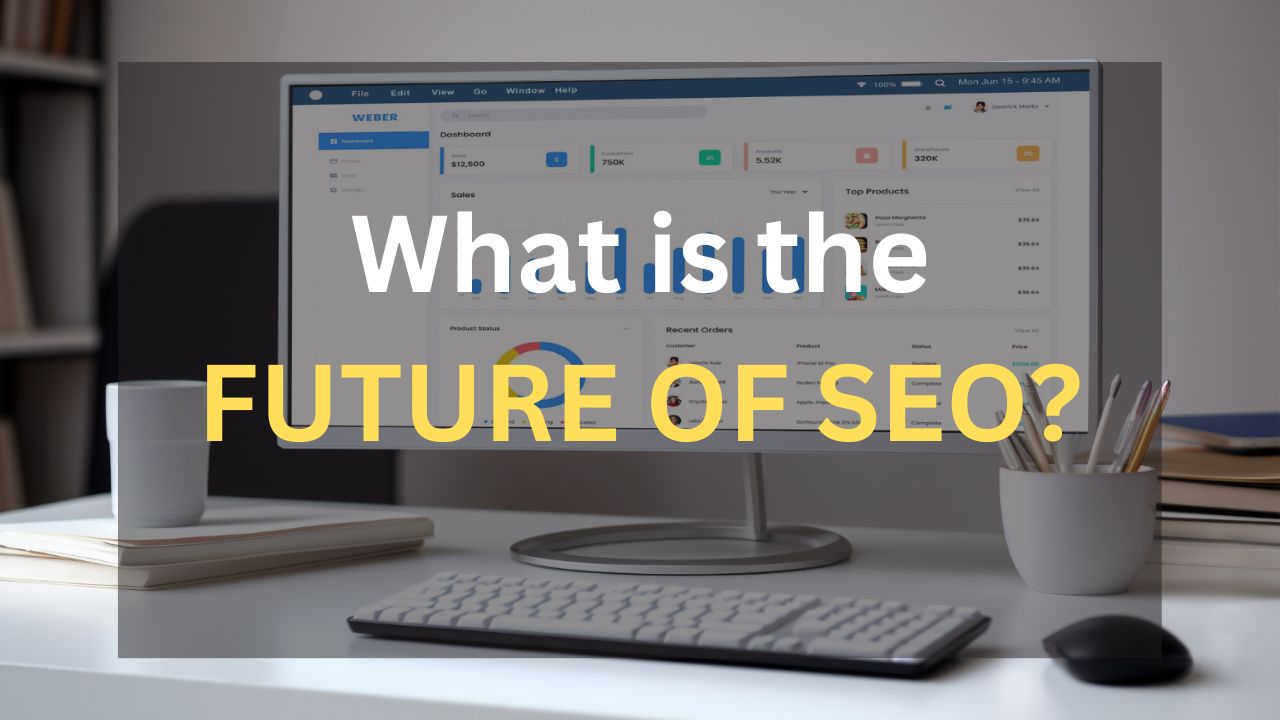SEO has been an important part of digital marketing for years, shaping how businesses establish and grow their online presence. SEO includes optimizing a website to rank higher in search engine results, driving organic traffic, and increasing search visibility.
Emerging trends and strategies in SEO are arising and will define the future of digital marketing. One of the most noteworthy evolution of SEO is the increased importance of search intent. Search engines like Baidu, Google, Bing, and Yahoo are better at understanding the intent behind a user’s search query, and websites that deliver content that meets that intent are more likely to rank well.
This means that businesses must focus on creating high-quality, relevant content that addresses the intent behind their target audience’s search queries.
Another emerging trend in SEO is the rise of voice search. Voice assistants like Alexa, Siri, and Google Assistant are becoming increasingly common, and people are using them to search for information.
As a result, businesses will need to optimize their voice search content, considering how people speak and the types of queries they are likely to make.
The future of SEO is becoming more data-driven. Advanced analytics tools enable businesses to gain deep insights into their website’s performance and make data-driven decisions about their SEO strategy. Businesses must invest in analytics tools and use the data to optimize their website’s content and structure.
1. Voice Search Dominance:
It’s worth noting that with the growing adoption of voice-activated devices and virtual assistants, voice search is predicted to become the dominant force in search engine optimization (SEO).
As users rely more on voice commands, search queries will become increasingly conversational, necessitating keyword strategies shifting towards more natural, long-tail phrases. In other words, businesses and website owners must optimize their voice search content to stay ahead of the curve.
- Optimize content for natural language queries.
- Focus on local SEO to capture location-specific voice searches.
- Implement schema markup to enhance content comprehensibility for search engines.
2. Artificial Intelligence (AI) Integration:
Integrating artificial intelligence (AI) into search algorithms has revolutionized how search engines perceive and prioritize content.
AI algorithms like Google’s Bidirectional Encoder Representations from Transformers (BERT) have significantly enhanced the interpretation of user intent, resulting in search results that are much more precise and relevant.
BERT’s deep learning capabilities have enabled it to contextualize the nuances of language, including prepositions and conjunctions, thereby providing a better understanding of queries and delivering more accurate results.
By incorporating AI into search algorithms, Search engines get better knowledge of the intent behind user queries and offer more relevant results, making for a more seamless and practical search experience.
- Prioritize user-centric content creation to align with AI’s emphasis on user intent.
- Utilize AI tools for data analysis and keyword research.
- Implement chatbots and virtual assistants for enhanced user engagement.
3. Mobile-First Indexing:
The growing usage of mobile devices has brought about a notable change in how search engines operate. To keep up with this trend, search engines have shifted towards a mobile-first indexing approach, prioritizing a site’s mobile version over a desktop version. It means that websites optimized for mobile and offering a seamless browsing experience will be favored in search rankings. As a result, website owners and developers are now placing more emphasis on creating mobile-friendly websites to stay competitive in the ever-evolving digital era.
- Ensure responsive design for optimal user experience across devices.
- Prioritize mobile page speed and loading times.
- Focus on mobile SEO, including mobile-friendly content and structured data.
4. Video SEO:
Video content has emerged as a standout medium as the online world becomes rapidly saturated with content. People find it more accessible to consume video content as it is engaging and visually attractive, which has led to a surge in popularity. In response to this trend, search engines adjust their algorithms to rank video content more effectively. The future of SEO will undoubtedly see a greater emphasis on video optimization as it becomes critical to cater to the growing demand for visual content. Websites prioritizing video optimization by creating high-quality, engaging video content will have an advantage in search engine rankings, visibility, and audience engagement.
- Create high-quality and engaging video content.
- Optimize video titles, descriptions, and tags.
- Utilize video transcripts and captions for accessibility and SEO benefits.
5. E-A-T (Expertise, Authoritativeness, Trustworthiness):
The E-A-T principle, which stands for Expertise, Authority, and Trustworthiness, has become increasingly important for content creators and publishers looking to boost their online visibility.
In simple terms, this principle reflects the idea that search engines like Google are placing greater emphasis on high-quality, credible, and trustworthy content from authoritative sources.
In other words, if you want your content to rank well on search engine results pages (SERPs), you need to demonstrate that you have the necessary expertise, authority, and credibility to be considered a reliable source of information.
Content creators and publishers must build a solid reputation by producing high-quality, well-researched content supported by reliable sources. In the future, we expect search engines to continue prioritizing content from authoritative sources, underscoring the importance of focusing on E-A-T principles when developing online content.
- Establish authorship and expertise through quality content.
- Showcase credentials, awards, and industry affiliations.
- Encourage positive online reviews and testimonials.
6. User Experience (UX) Signals:
Search engines have been placing a growing emphasis on user experience signals lately, such as the time it takes for a page to load and the overall performance of a website. This means websites prioritizing a positive user experience can expect improved search rankings. In other words, search engines are increasingly looking beyond traditional ranking factors like keywords and links and focusing more on the quality of the user experience.
This trend will probably continue as search engines refine their algorithms and emphasize satisfying user intent. Therefore, it’s becoming more critical than ever for website owners and developers to concentrate on creating fast, responsive, and user-friendly sites that prioritize the needs and preferences of their audience.
- Optimize website speed and performance.
- Prioritize mobile responsiveness and usability.
- Create intuitive site navigation for a seamless user journey.
7. The Rise of Visual Search:
In recent years, visual search has emerged as a new Search Engine Optimization (SEO) trend. This technology is powered by image recognition software that allows users to search using photos instead of text. With the ever-increasing amount of visual content available on the internet, search engines are evolving to interpret and rank this type of content, making it easier for users to find what they are looking for. This innovative approach to search is expected to change how we interact with online information and potentially revolutionize the SEO industry.
- Optimize images with proper file names and alt text.
- Implement structured data for image-rich snippets.
- Leverage visual content, such as infographics, to enhance engagement.
Conclusion:
To stay ahead of the competition, all business owners must adapt to these trends and adopt a practical approach that combines technical optimization, content quality, and user experience. Technical optimization ensures a website is structured correctly, coded, and optimized for search engine crawlers. Content quality refers to the creation of high-quality, engaging content that is suitable to the target audience. User experience contains all aspects of how a user interacts with a website, including navigation, design, and functionality.
This approach to SEO is essential for businesses looking to succeed in a rapidly transforming world. By embracing these strategies, companies can position themselves for success and achieve higher search engine rankings, increased traffic, and improved conversion rates. However, it’s important to remember that SEO is an ongoing process that requires continuous research, monitoring, testing, and optimization.

